Maple Royal Red
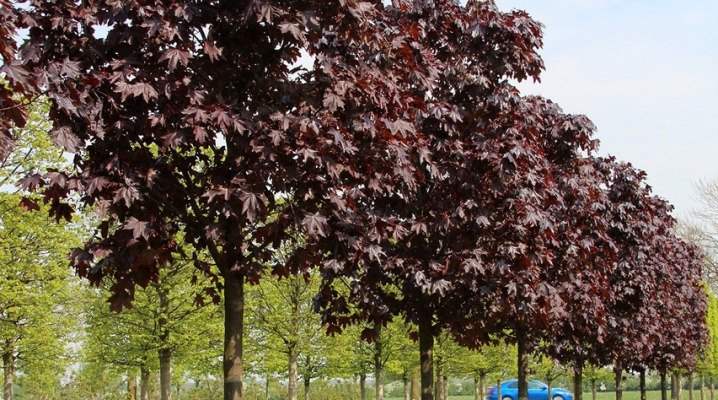
Maples will decorate any area: they can be planted one at a time and in groups. In the summertime, the tree is distinguished by lush and carved foliage; in the fall - this is an insane riot of colors, configurations and palettes.
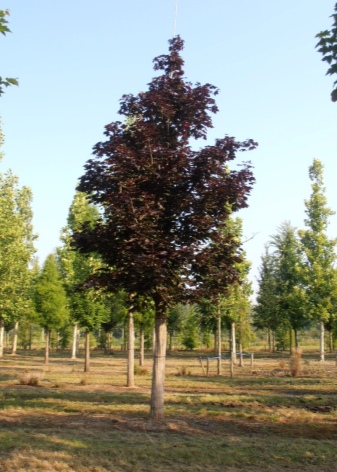
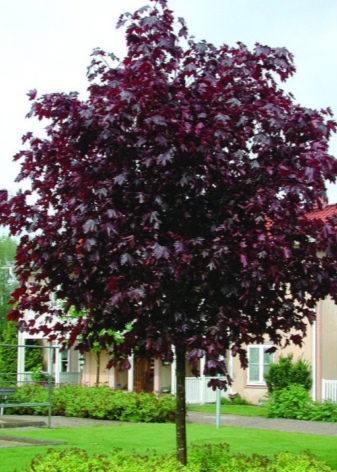
Description
In general, the maple is represented by about 150 varieties that grow in temperate zones. They grow in the form of trees or bushes with simple, and sometimes complicated, extended petiolate leaves, very original, brightly variegated in autumn, and lionfish fruits.
Most of the species are used as decorative elements with graceful patterns and unusual leaf configurations.
The trees are attractive with a juicy autumn palette, interesting shapes of inflorescences and fruits, patterns on the bark.
Most species are excellent honey plants. For gardening, these plants have been used from the very beginning of the development of horticulture.
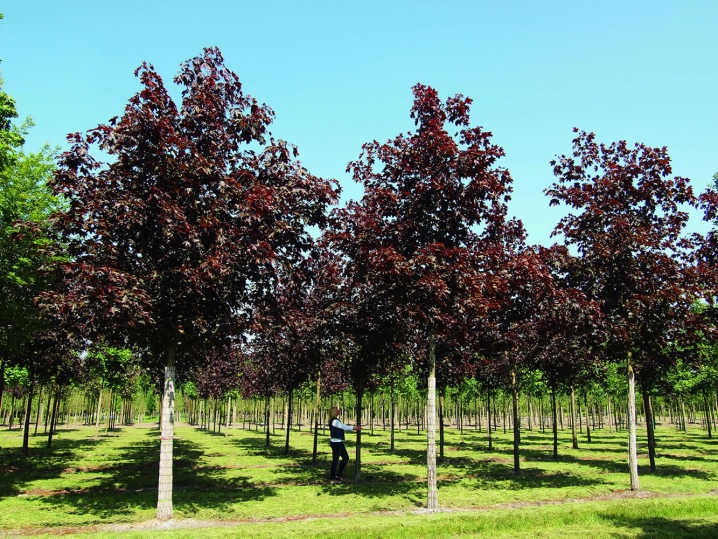
For the European part of Russia, the plant is winter-hardy, rather capricious to the degree of fertility and the level of soil moisture, growing not very quickly, not tolerating stagnant moisture and soil salinity. It perfectly survives transplantation within cities, it is resistant to winds.
In the range of its growth, maple is the main breed for garden and park plantings in our country. This is facilitated by its considerable size, remarkably thick upper part, long trunk, ornamental leaves - these are the properties for which gardeners appreciate it. It is considered one of the productive plants for one-time plantings and for the formation of beautiful alleys.
For a long time, his exuberant autumn clothes contrast pretty well next to the coniferous plantings. Ornamental plant species are diverse and differ in color, configuration of leaves and crowns, as well as in the characteristics of growth.
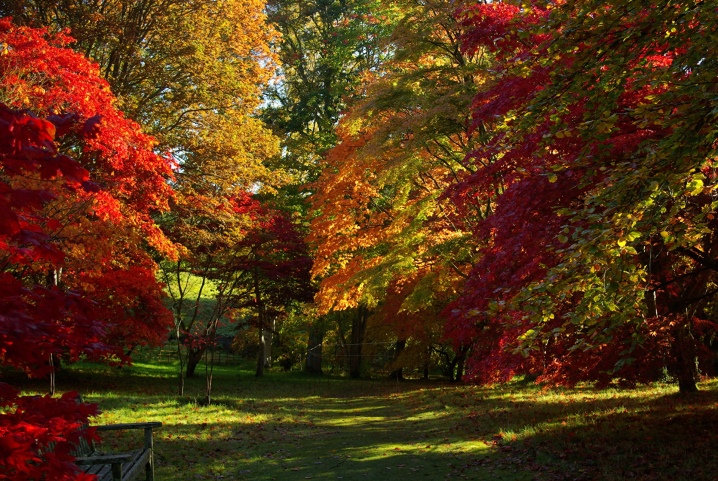
The Royal Red Norway maple is characterized by its leading slender trunk, not quite uniform crown density and large leaves, which, when blooming, turn into bright red shades, and then into dark red colors.
The tree grows up to 10-12 meters in height, has a wide, pyramid-shaped top with a clearly defined leading trunk. The bark is of dark gray shades, dotted with fine wrinkles. The leaves are large, with 5-7 lobes, getting a lighter color in autumn.
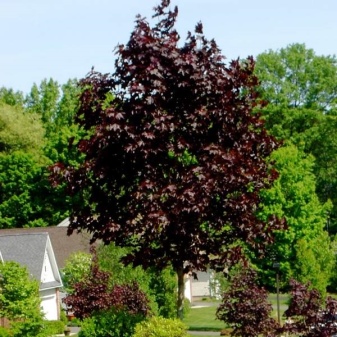
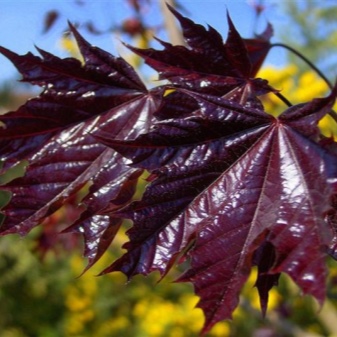
The plant begins to bloom in May, with the simultaneous blooming of leaves. Flowers and inflorescences are yellow. Lionfish are painted in brownish-yellow tones. A tree with high winter hardiness, in very strong cold, the shoots of annual trees can freeze slightly.
The tree is light-loving, capable of tolerating light shade, demanding a good level of fertility and soil moisture (loves slightly acidic soil). Afraid of dry periods, stagnation of water and excessively salty soils, gets sick when the soil is compacted. It is advisable to plant the plant in well-lit places. As a preventive measure, it requires protection from powdery mildew.
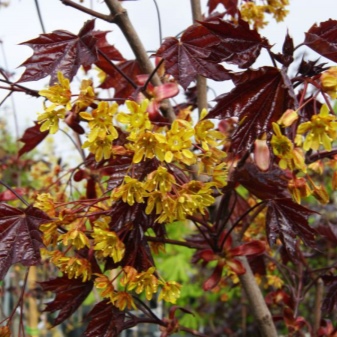
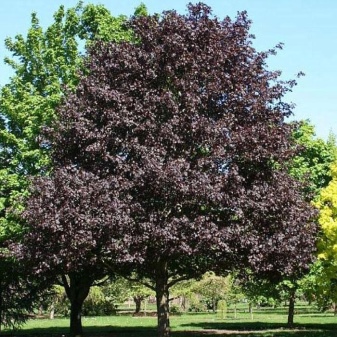
There are three main breeding methods.
-
Seeds. The seeds are harvested in the spring at the end of flowering. This method requires special skills and a lot of attention.
-
Cuttings. In the middle of summer, shoots are harvested and rooted.
-
Varietal forms are grafted onto stems. It is better to acquire such forms in the form of seedlings in the nursery. It is difficult to grow such an option on your own.

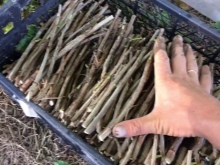
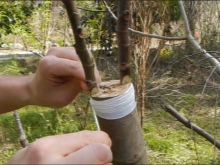
Growing features
Most forms of Norway maple are winter-hardy, have good shoot-forming ability, and keep their typical shape well. They are also recommended for one-time plantings on lawns, and for the formation of contrasting effects in groups.
Plants are usually planted in open meadows or in semi-shaded conditions. It is important to remember that trees that have a certain decorative color of leaves, when grown in shaded conditions, may lose it.
The root collar is usually located no deeper than the ground level.
In trees that give a powerful root system, the neck is slightly deepened (up to about 50 mm).

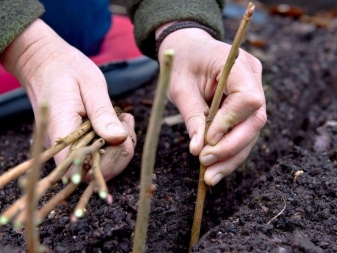
With soil moisture close to the surface, crushed stone drainage must be done (thickness is about 10-20 cm).
The soil mixture usually consists of peat compost, sod and sand in a ratio of 3: 2: 1. Mineral fertilizer (120-150 g) may be added to the planting hole. When planting, they adhere to the optimum acidity of the soil (pH 6.0-7.5).
If fertilizers were not applied when planting the plants, then for the next spring, fertilizing is provided in the form of:
-
urea (40 g / m2);
-
potassium salts (1525 g / m2);
-
phosphate fertilizers (3050 g / m2).
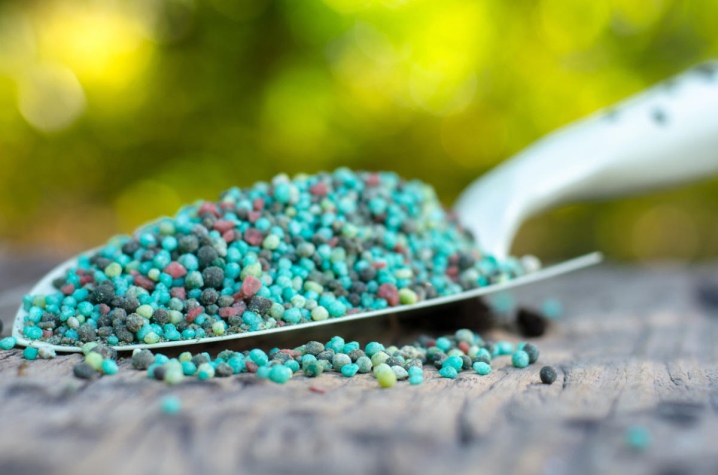
In the summer, in the process of loosening and watering, a complex of trace elements (100-120 g / m2) is added.
Water the tree immediately after planting at the rate of 20 liters. Most maples can withstand the relative dryness of the soil, but they develop much more productively with regular watering.
Irrigation rates in the driest periods are 10-20 liters per tree once a week. With regular precipitation - 10-20 liters per tree once a month.
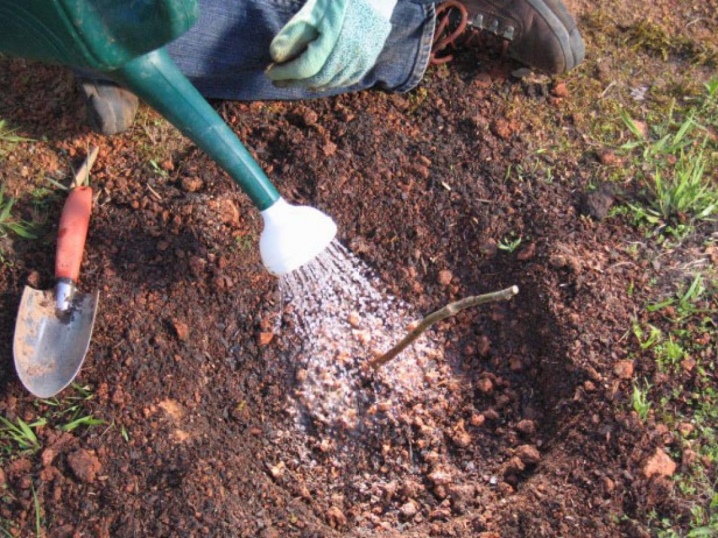
Loosening should be shallow and regular; it should be done during weeding and immediately after watering. At the same time, it is important to avoid significant compaction of the soil. After planting, the soil around the trees is mulched with a peat mixture with a layer of up to about 50 mm. Pruning of plants is required - remove dried and diseased branches.
In the course of growing plants, it is important to be wary of harmful:
-
whitefly;
-
mealybug;
-
leaf weevil.
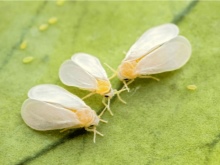

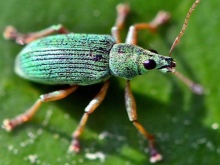
Typical diseases of the maple:
-
powdery mildew fungi;
-
manifestations of black spot.
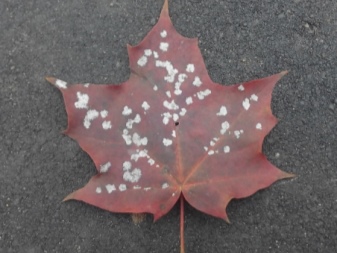
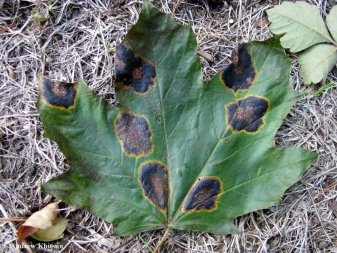
Consider the order of planting and care.
-
It is better to plant maple in autumn, in the second decade of October, when the soil is still warm and the tree has time to adapt.
-
The tree prefers sunny or slightly shaded areas, grows worse in the shade. Therefore, the distance to the fence or neighboring trees must be at least 4 meters.
-
The size of the planting fossa is chosen according to the size of the root ball. Usually it is 70 cm in diameter, and up to 60 cm deep. Drainage is required on clay soils.
-
Trying on a tree. The root collar should be flush with the ground.
-
Fill the hole up to half with a nutrient mixture (3 parts of humus, 2 - turf and 1 part of sand). You can use ready-made soil options.
-
Lightly compact the soil and spill it with water.
-
We fill up the soil to the end and ram it again. We make a small roller around the perimeter to preserve water.
-
Immediately after disembarkation, pour out at least 2 buckets of water.
-
In autumn and spring, we water the seedling 2 times a week, if there is no precipitation for a long time.
-
If a nutrient mixture was used during planting, then the soil should not be fertilized. If the land is poor, then it is better to apply fertilizers.
-
In the future, we fertilize the tree once a year. The compositions are brought in in the spring.
-
We carry out loosening twice a season. You should not go deeper into the soil more than 10 cm, so as not to damage the root system.
-
After loosening, mulch the surface with peat (layer 3-5 cm). After precipitation, the surface should also be loosened.
-
Every spring we inspect the crown and cut off any damaged or dried branches.
-
We make crown formation, if necessary, at any time of the year.
-
Diseases are identified by leaves and twigs. If there is any plaque or extraneous growths, we disassemble and process the tree with an appropriate tool.
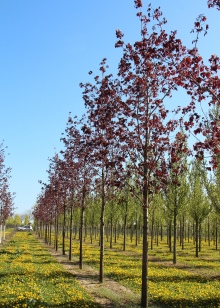
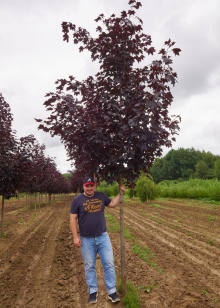
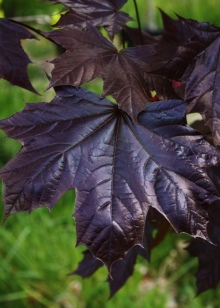
During winter cold weather, with a lack of snow, trees should be covered with coniferous branches around the root collar.
In case of frostbite, young shoots must be removed. The crown is usually restored, replenishing with fresh sprouts, which have time to get stronger before the onset of cold weather.
Plants on a stem during the first 2-3 years after planting are protected from frostbite by covering the trees with burlap in 2 layers. Gradually, with growth, the degree of winter hardiness of trees increases.
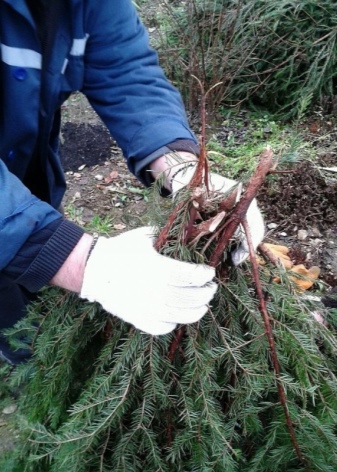
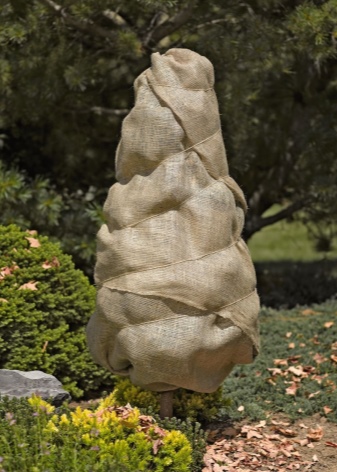
Application in landscape design
Maple is extremely popular in landscape design for single, alley planting in ordinary and group forms, for the formation of contrasting and seasonal compositions. Maple is decorative during its full developmental period. But especially in the spring, when the color of the foliage comes into contrast with the yellowish flowers, the original decorative effect of the plant is perfectly felt.
The tree quickly adapts to urban conditions, the air pollution of its streets. The plant is very popular in our cities, it is considered one of the main species used in landscaping:
-
residential building complexes;
-
hospital buildings;
-
educational institutions;
-
small courtyards and private areas;
-
summer cottages;
-
city streets, boulevards and alleys;
-
squares and park areas.
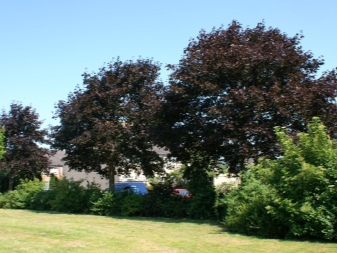

It is always a winning object for the landscape formation of any territories, since its applicability is extremely wide and fruitful:
-
due to the high degree of attractiveness throughout the growing season;
-
the unique shape of leaves and an autumn riot of colors;
-
an excellent level of crown formation, the ability to give it any desired shape;
-
thanks to the excellent appearance in coniferous compositions.
The plant is sheared in the bonsai style, grown on a trunk, in rockeries, used in decorating alpine slides and in hedges.
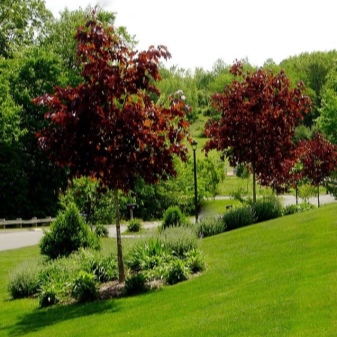




































































The comment was sent successfully.